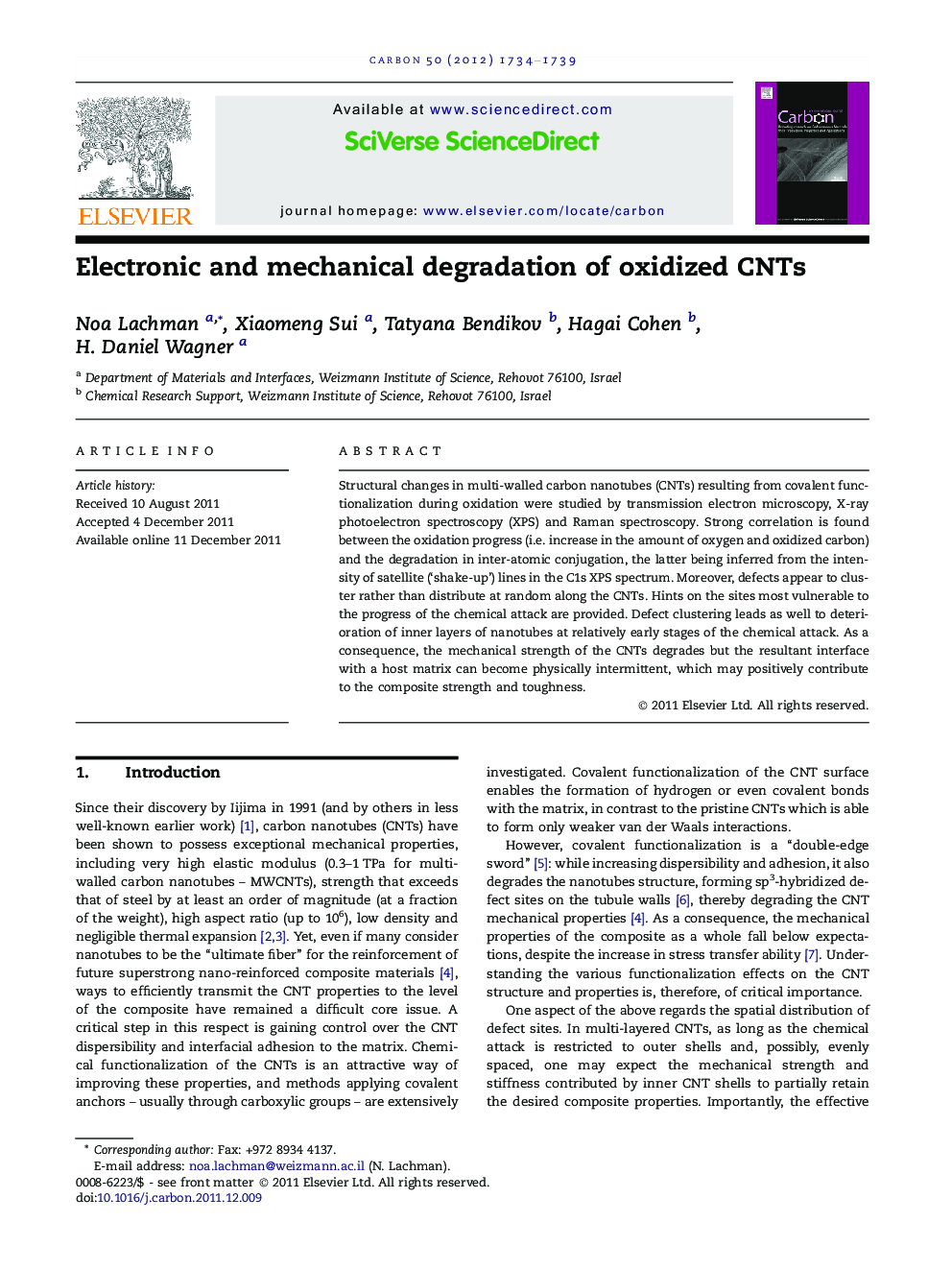| Article ID | Journal | Published Year | Pages | File Type |
|---|---|---|---|---|
| 1415637 | Carbon | 2012 | 6 Pages |
Structural changes in multi-walled carbon nanotubes (CNTs) resulting from covalent functionalization during oxidation were studied by transmission electron microscopy, X-ray photoelectron spectroscopy (XPS) and Raman spectroscopy. Strong correlation is found between the oxidation progress (i.e. increase in the amount of oxygen and oxidized carbon) and the degradation in inter-atomic conjugation, the latter being inferred from the intensity of satellite (‘shake-up’) lines in the C1s XPS spectrum. Moreover, defects appear to cluster rather than distribute at random along the CNTs. Hints on the sites most vulnerable to the progress of the chemical attack are provided. Defect clustering leads as well to deterioration of inner layers of nanotubes at relatively early stages of the chemical attack. As a consequence, the mechanical strength of the CNTs degrades but the resultant interface with a host matrix can become physically intermittent, which may positively contribute to the composite strength and toughness.
